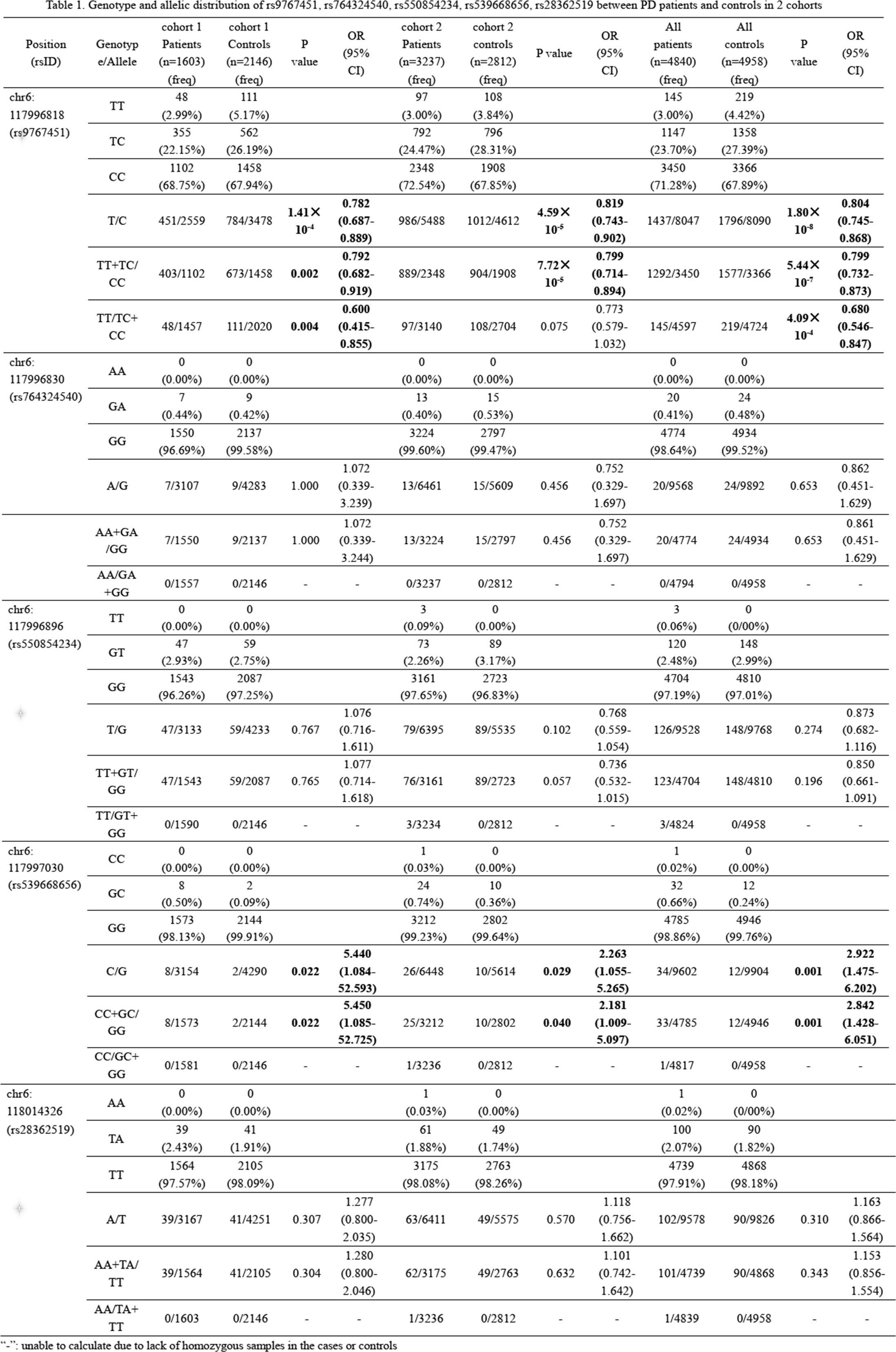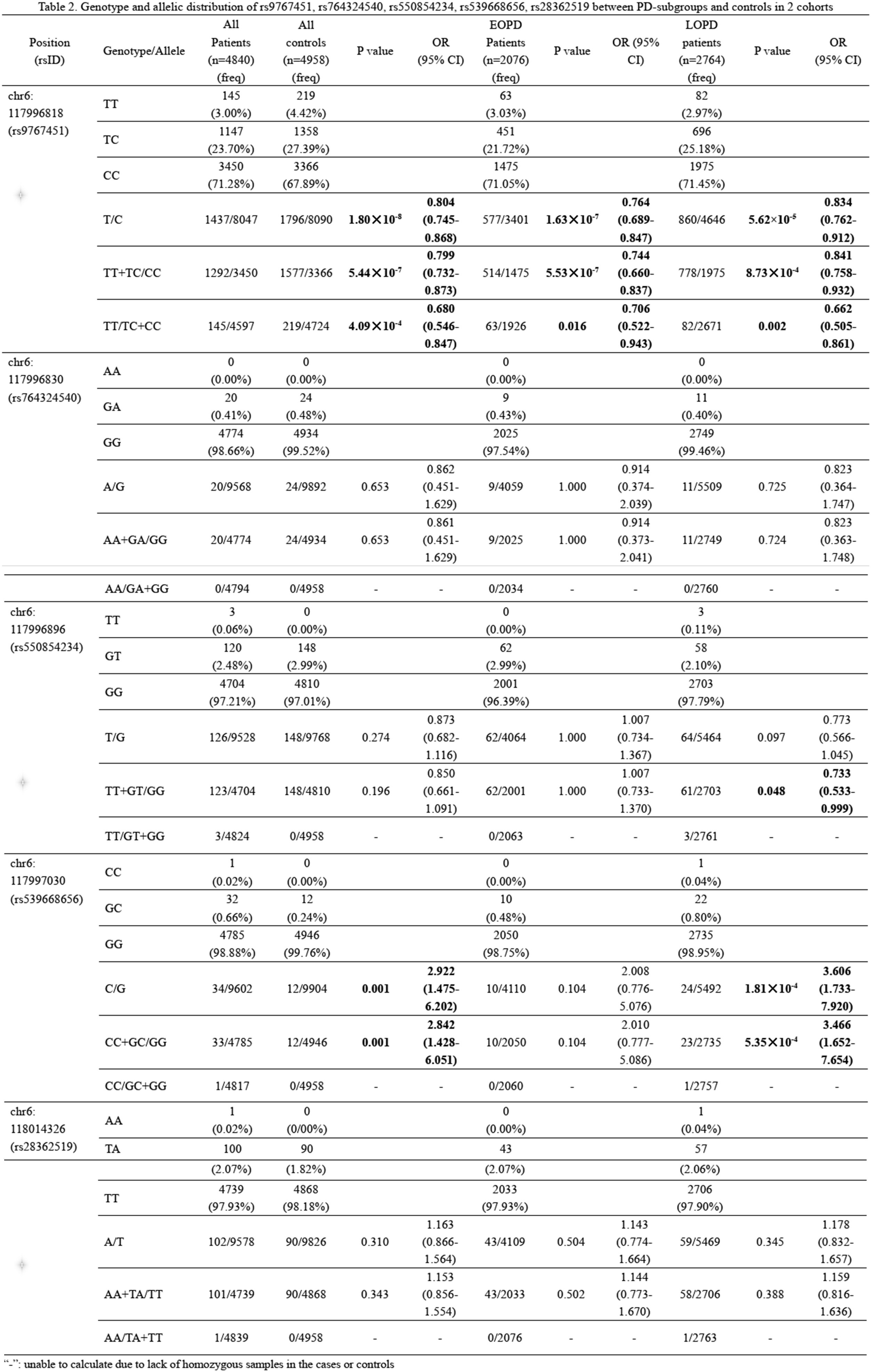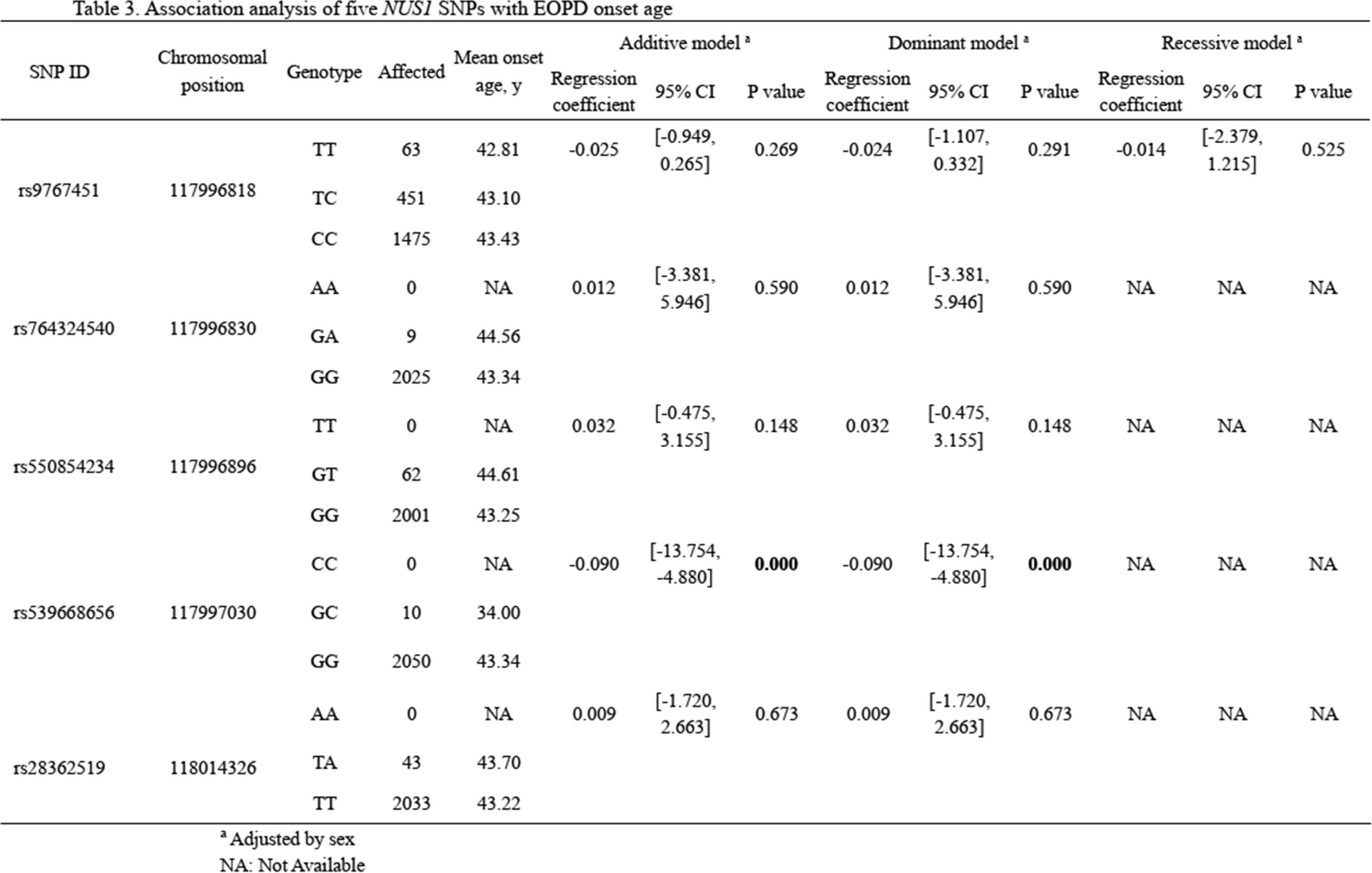Category: Parkinson's Disease: Genetics
Objective: In this study, using whole-exome sequencing (WES) and direct Sanger sequencing analysis, we investigated the common and low-frequency variants of NUS1 in two case-control cohorts to ascertain whether NUS1 common or low-frequency variants are associated with risk and age at onset (AAO) of Parkinson’s disease (PD).
Background: Recently, our previous study explored the effect of novo mutations on PD pathogenesis in a Chinese population and identified NUS1 as a candidate gene for PD 1]. However, the study the associations between common or low-frequency variants in NUS1 and PD is rather rare.
Method: A two-stage case-control study was designed to determine a genetic association, including 1,603 cases and 2,146 controls by whole-exome sequencing to discover NUS1 variants (minor allele frequency>1‰), and 3,237 patients and 2,812 controls by Sanger sequencing were used to replicate the associations. The two cohorts were further combined to obtain a summary estimate. Further stratified analysis was conducted according to AAO to assess variants’ association with early-onset PD (EOPD) and late-onset PD (LOPD). Linear regression analysis was performed to evaluate variants’ association and AAO of PD.
Results: Five (including one common and four low-frequency variants) were discovered in cohort 1. Rs9767451 were associated with a decreased risk of PD in cohort 1 (odds ratio [OR]<1, p<0.01) while rs539668656 were associated with an increased risk of PD (OR>1, p<0.05), and the association results for rs9767451 and rs539668656 in cohort 1 were also replicated in cohort 2 and the combined cohorts (p<0.05) [table 1]. Furthermore, rs539668656 had an association with risk of LOPD (OR>1, p<0.001), while rs9767451 was associated with a decreased risk of EOPD and LOPD (OR<1, p<0.05) [table 2]. NUS1 rs539668656 was associated with the earlier AAO in EOPD patients [table 3].
Conclusion: These findings reveal that common and low-frequency variants in NUS1 have a role in the pathogenesis of PD. A low-frequency variant in NUS1 may influence EOPD AAO.
References: [1]Guo JF, Zhang L, Li K, Mei JP, Xue J, Chen J, Tang X, Shen L, Jiang H, Chen C, Guo H, Wu XL, Sun SL, Xu Q, Sun QY, Chan P, Shang HF, Wang T, Zhao GH, Liu JY, Xie XF, Jiang YQ, Liu ZH, Zhao YW, Zhu ZB, Li JD, Hu ZM, Yan XX, Fang XD, Wang GH, Zhang FY, Xia K, Liu CY, Zhu XW, Yue ZY, Li SC, Cai HB, Zhang ZH, Duan RH, Tang BS. Coding mutations in NUS1 contribute to Parkinson’s disease. Proc Natl Acad Sci U S A 2018; 115:11567-72.
To cite this abstract in AMA style:
L. Jiang, J. Mei, Y. Zhao, R. Zhang, H. Pan, Y. Yang, Q. Sun, Q. Xu, X. Yan, J. Tan, J. Li, B. Tang, J. Guo. NUS1 polymorphisms modify the risk and age at onset of Parkinson’s disease [abstract]. Mov Disord. 2020; 35 (suppl 1). https://www.mdsabstracts.org/abstract/nus1-polymorphisms-modify-the-risk-and-age-at-onset-of-parkinsons-disease/. Accessed December 26, 2025.« Back to MDS Virtual Congress 2020
MDS Abstracts - https://www.mdsabstracts.org/abstract/nus1-polymorphisms-modify-the-risk-and-age-at-onset-of-parkinsons-disease/



